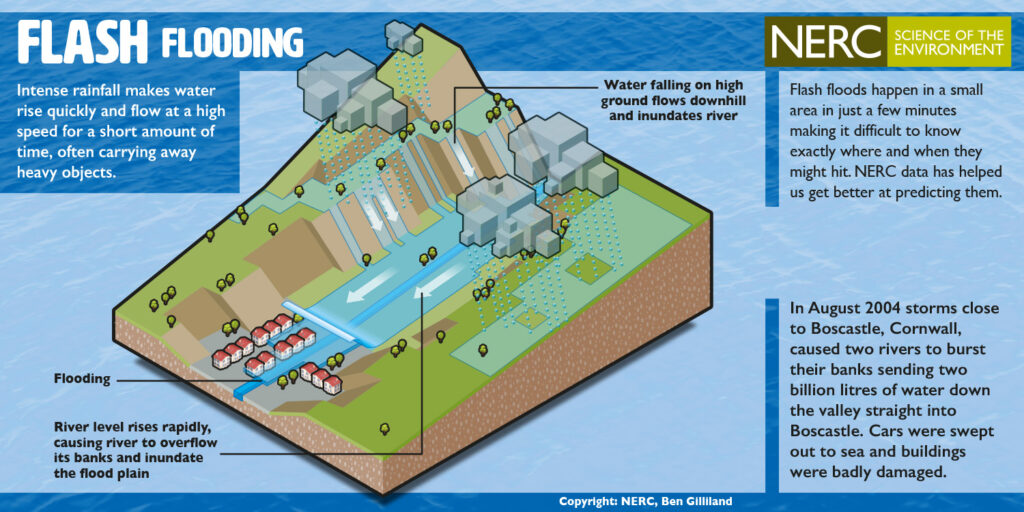In recent decades, the world has witnessed an alarming increase in extreme weather events, particularly flash floods. These sudden and intense flooding events are primarily driven by changes in hydro-meteorological patterns due to climate change. The catastrophic flash flood that struck eastern Slovakia on July 20, 1998, serves as a stark reminder of the devastating impacts of such natural disasters.
Understanding Flash Floods
Flash floods occur when a large amount of rain falls in a short period, often due to severe thunderstorms. Unlike regular floods, which can take days to develop, flash floods can arise within minutes or hours of heavy rainfall, leaving little time for preparation or evacuation.

Key factors contributing to flash floods include:
- High Rainfall Intensity: Intense rainfall over a short duration overwhelms the ground’s ability to absorb water, leading to rapid runoff.
- Geographical Features: Areas with steep terrain or narrow valleys are particularly susceptible, as water flows more rapidly in such regions.
- Urbanization: Impervious surfaces like roads and buildings prevent water absorption, exacerbating flood conditions in urban areas.
- Soil Conditions: Saturated or impermeable ground cannot absorb water effectively, leading to higher surface runoff.
The 1998 Slovak Catastrophe: A Case Study
On July 20, 1998, eastern Slovakia experienced a devastating natural disaster unprecedented in the country’s history. Extreme storms accompanied by torrential rains caused widespread flash floods, particularly affecting the Šarišská highlands, Levoča mountains, and Branisko area.
- Impact: The floods claimed 50 lives, mostly in the village of Jarovnice. Over 10,850 people were directly affected, with 756 left homeless. Rescue operations evacuated 3,618 individuals, 2,033 homes were flooded, and 272 significantly damaged or destroyed.
- Economic Loss: The floods resulted in substantial economic damage, amounting to 850 million Slovak korunas (about 28 million euros). This included flooded agricultural land and livestock losses.
- Meteorological Phenomenon: A massive flood wave, reaching heights of five to six meters, was recorded in Jarovnice. The confluence of the Malá and Veľká Svinka rivers saw water flow rates of 200 cubic meters per second, comparable only to the Danube in Slovakia. (2)

Jarovnice was the most affected village by the flood caused by an exceptionally strong cloudburst.
Climate Change Connection
Klimatologist Pavel Matejovič attributes these extreme weather events to climate change, noting the heightened extremity and dynamics of atmospheric processes.
“Warmer air acts like a sponge, absorbing more water vapor. When conditions align, such as during severe thunderstorms, this can lead to heavy downpours in a brief period, while nearby regions may experience drought.” (3)
The 1998 Slovak flash flood tragedy underscores the urgent need for effective strategies to adapt to and mitigate the impacts of climate change. Projects like FLOPRES are pivotal in developing innovative solutions for flood modeling, forecasting, and early warning systems. This event serves as a crucial lesson in understanding the dynamic relationship between climate change and hydro-meteorological patterns, emphasizing the importance of preparedness and resilience in the face of increasing climate-related disasters.
Sources:
